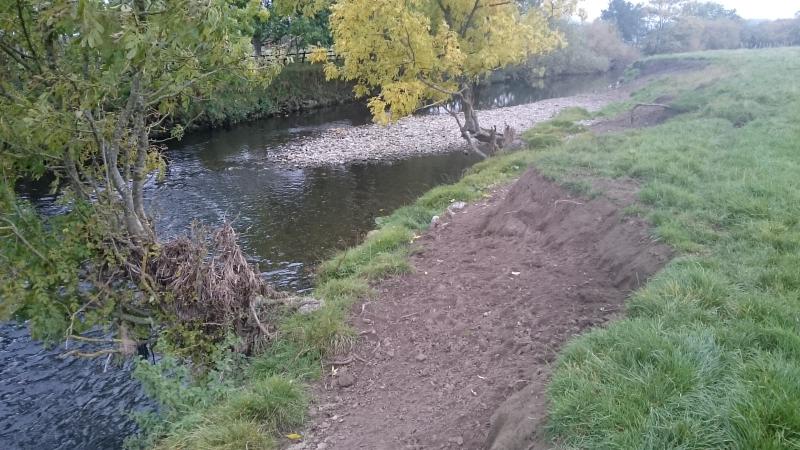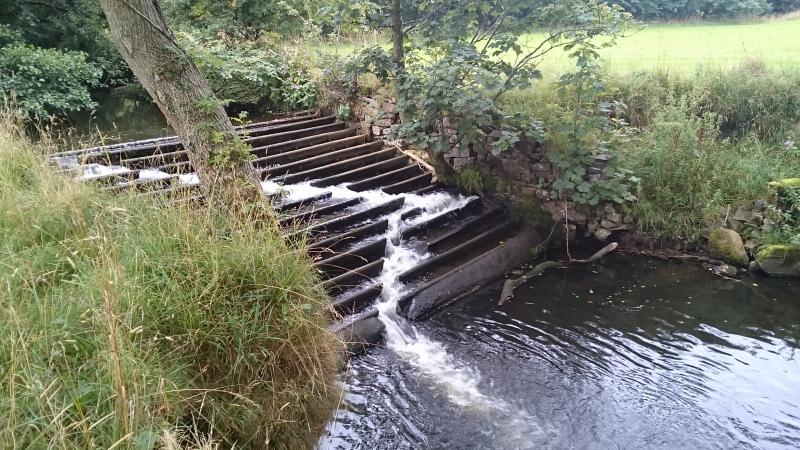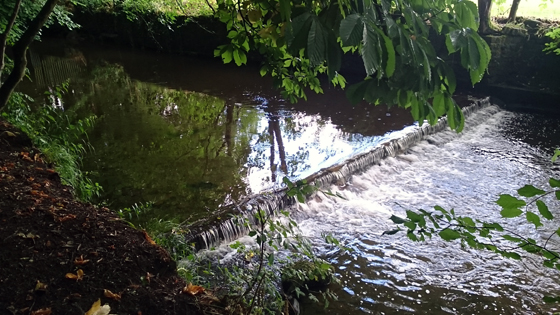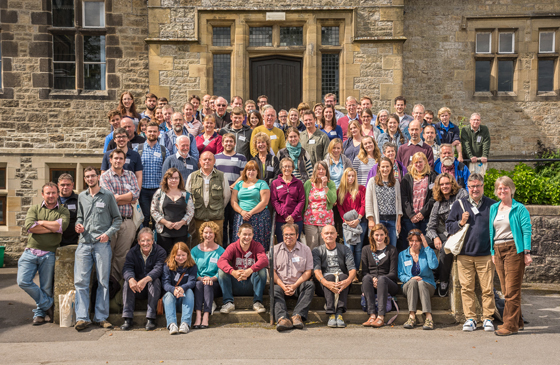This is the view from my office window. Of late, I have been lucky to see across the valley. When it has been sufficiently clear there has been a stark message staring me in the face. So, what’s wrong in this image? OK, it’s not a great image but then it was taken in blowing rain. The field (centre shot) has a similar slope / exposure as those surrounding it yet it is the only one veined with rivulets of water. It is also the only one under permanent livestock grazing as compared to the fields on either side through which stock is rotated regularly. The result is a reduced crop plant height, root structure (and probably diversity), and more compacted soils leading to serious (visible) overland flow during times of heavy rain. At the bottom of that field is a tributary of the River Aire; little wonder that the Aire is often occupying the full width of its floodplain (below).
Reflecting on all this rain
Posted on December 14, 2015





